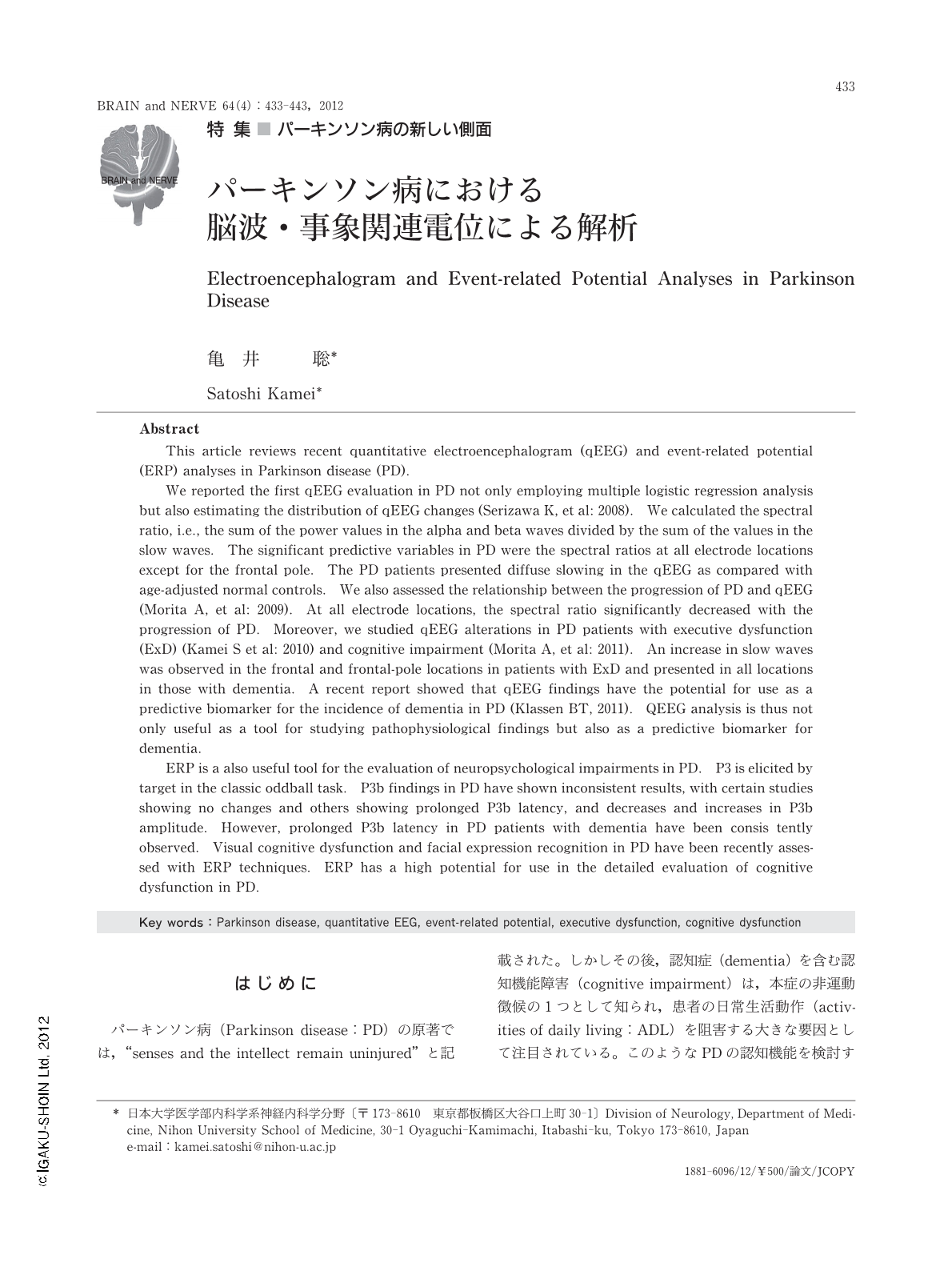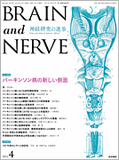Japanese
English
- 有料閲覧
- Abstract 文献概要
- 1ページ目 Look Inside
- 参考文献 Reference
はじめに
パーキンソン病(Parkinson disease:PD)の原著では,“senses and the intellect remain uninjured”と記載された。しかしその後,認知症(dementia)を含む認知機能障害(cognitive impairment)は,本症の非運動徴候の1つとして知られ,患者の日常生活動作(activities of daily living:ADL)を阻害する大きな要因として注目されている。このようなPDの認知機能を検討する手法として,脳波(electroencephalogram:EEG)を基盤にした脳波周波数解析(quantitative EEG:qEEG)や事象関連電位(event-related potentials:ERP)が挙げられる。本稿では,PDにおけるqEEGとERPについて最近の動向を踏まえ概説する。
Abstract
This article reviews recent quantitative electroencephalogram (qEEG) and event-related potential (ERP) analyses in Parkinson disease (PD).
We reported the first qEEG evaluation in PD not only employing multiple logistic regression analysis but also estimating the distribution of qEEG changes (Serizawa K, et al: 2008). We calculated the spectral ratio, i.e., the sum of the power values in the alpha and beta waves divided by the sum of the values in the slow waves. The significant predictive variables in PD were the spectral ratios at all electrode locations except for the frontal pole. The PD patients presented diffuse slowing in the qEEG as compared with age-adjusted normal controls. We also assessed the relationship between the progression of PD and qEEG (Morita A, et al: 2009). At all electrode locations, the spectral ratio significantly decreased with the progression of PD. Moreover, we studied qEEG alterations in PD patients with executive dysfunction (ExD) (Kamei S et al: 2010) and cognitive impairment (Morita A, et al: 2011). An increase in slow waves was observed in the frontal and frontal-pole locations in patients with ExD and presented in all locations in those with dementia. A recent report showed that qEEG findings have the potential for use as a predictive biomarker for the incidence of dementia in PD (Klassen BT, 2011). QEEG analysis is thus not only useful as a tool for studying pathophysiological findings but also as a predictive biomarker for dementia.
ERP is a also useful tool for the evaluation of neuropsychological impairments in PD. P3 is elicited by target in the classic oddball task. P3b findings in PD have shown inconsistent results,with certain studies showing no changes and others showing prolonged P3b latency,and decreases and increases in P3b amplitude. However,prolonged P3b latency in PD patients with dementia have been consis tently observed. Visual cognitive dysfunction and facial expression recognition in PD have been recently assessed with ERP techniques. ERP has a high potential for use in the detailed evaluation of cognitive dysfunction in PD.

Copyright © 2012, Igaku-Shoin Ltd. All rights reserved.


